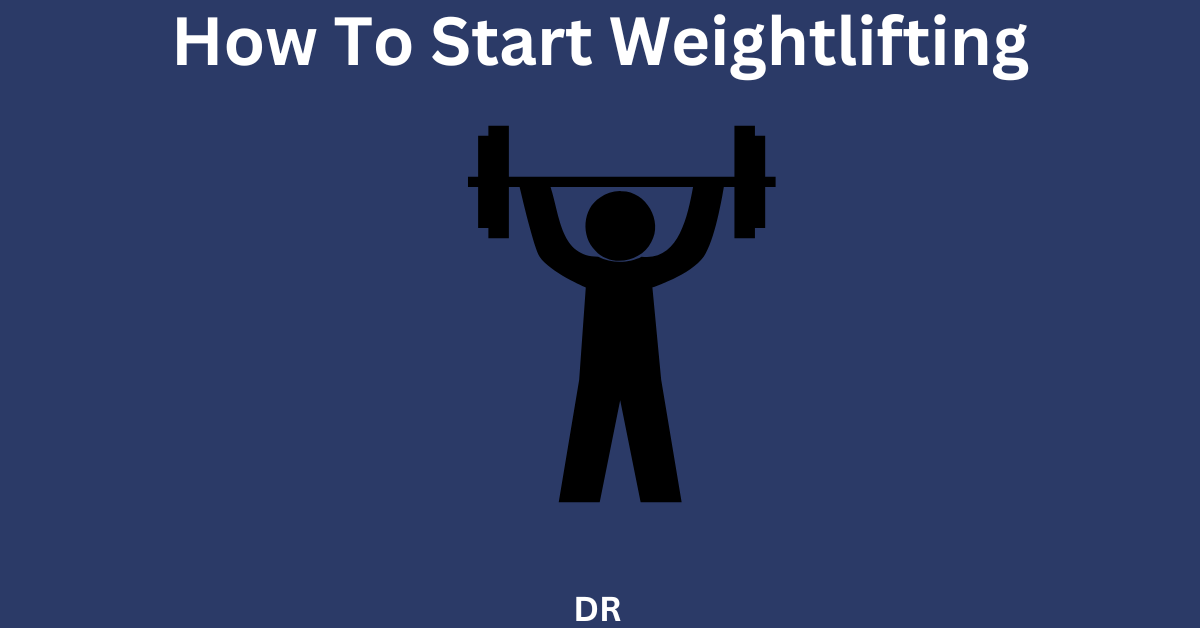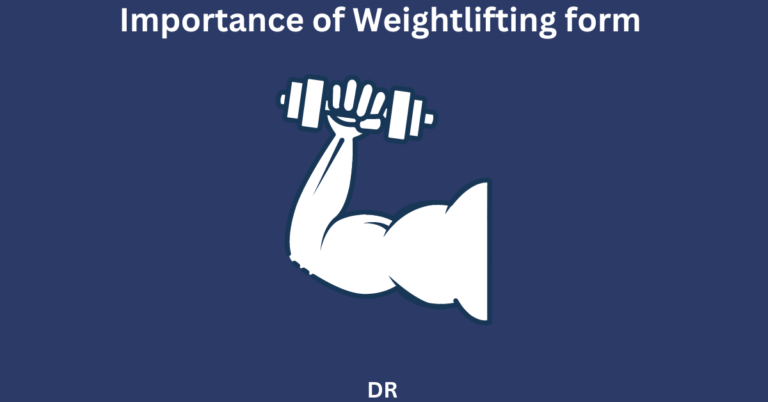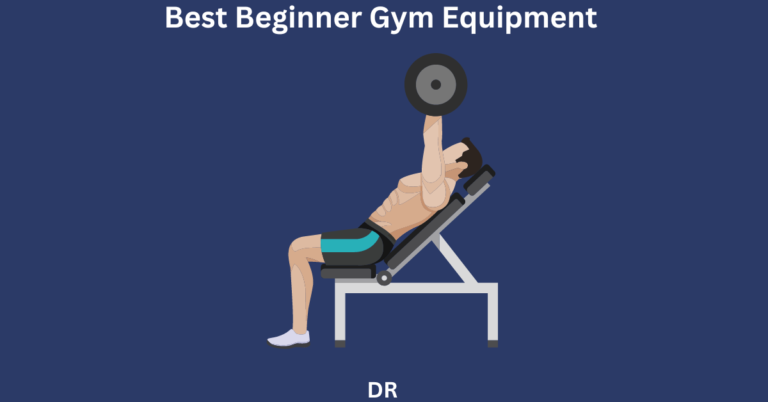How to Start Weightlifting for Beginners: Your Ultimate 2024 Guide
Ever wondered how to transform your body and boost your strength, but felt intimidated by the weights section at the gym? You’re not alone! In fact, 30% of people experience performance based anxiety at the gym, and 42% admit they experienced appearance-based anxiety when working out.
It’s a fantastic way for anyone to improve their health, build confidence, and sculpt their physique. In this guide, we’ll walk you through everything you need to know to start your weightlifting journey in 2024. Now let’s get into it!
TLDR
Tracking progress and staying motivated is key to weightlifting success. Set realistic goals, log your workouts, and use various methods to measure body changes. Overcome plateaus by mixing up your routine. Find a supportive community or workout buddy for accountability.
Use apps or tools to track progress. Remember, consistency is more important than perfect motivation. Celebrate small wins and focus on personal improvement rather than comparing yourself to others.
Here is a very useful video explaining weightlifting in a simplifies way:
Understanding the Benefits of Weightlifting
`When I first got into weightlifting I was very big into swimming and competing at a regional level. I initially got into the gym with my friends after school one day. I still remember we trained back and biceps.
Let’s just say I loved it from day one, the feel of my muscles burning in this new unique way was incredible. The amount amazing things weightlifting has done for me is endless, however, there are the six main benefits I experienced:
1) Increased muscle strength and mass
So, muscle strength and mass. That’s the obvious one, right? The physical change in my appearance obviously was one of the main reasons I got into weightlifting as I always wanted to build that amazing V-Taper aesthetic physique.
Weightlifting for beginners also brings the strength improvement which I really loved and valued for my swimming as it had a great carry over of strength which increased my speed in the water. Building a body you are proud of and a strength improvements sound like a win in my books.
2) Improved bone density
Now, let’s talk about bone density. I’ll be honest, this wasn’t even on my radar when I started, however as we age this is an important factor to consider. Strength training can actually increase bone density and reduce the risk of osteoporosis.
3) Enhanced metabolism and fat loss
One thing that really surprised me was how much weightlifting revved up my metabolism. I used to be that guy who could eat a whole pizza without gaining an ounce. But as I hit my 30s, that changed fast. Weightlifting helped me get my metabolism back on track. It’s not a miracle cure, but it definitely helps with fat loss.
4) Better posture and balance
Oh, and posture! I used to have terrible posture from hunching over a computer all day. My back would kill me by the end of the week. But after a few months of consistent weightlifting, I noticed I was standing taller without even thinking about it. My balance improved too, which came in handy when I decided to try surfing last summer (spoiler alert: I still wiped out a lot, but at least I could stand up on the board).
5) Reduced risk of injury in daily activities
Here’s something I wish someone had told me earlier: weightlifting can seriously reduce your risk of injury in everyday life. I used to throw out my back just picking up a heavy box. Now, I can help my friends move without fear. It’s like my body is better prepared for whatever life throws at it.
6) Boosted mental health and self-esteem
But you know what? The biggest benefit for me has been mental. There’s something incredibly empowering about setting a goal, working towards it, and seeing progress. Whether it’s adding another plate to the bar or finally nailing that perfect form, each little victory is a boost to my self-esteem.

Now, I’m not gonna lie and say it’s all been smooth sailing. There’ve been times when I’ve pushed too hard and ended up sore for days. I’ve made mistakes, like skipping leg day for way too long (don’t be like me, folks). But even the setbacks have been learning experiences.
If you’re thinking about giving weightlifting a try, here’s my advice: start slow, focus on form, and be consistent. You don’t need to lift heavy right away. In fact, it’s better if you don’t. I started with just bodyweight exercises and gradually worked my way up.
Also, don’t get too caught up in comparing yourself to others at the gym. Trust me, everyone’s on their own journey. Focus on your own progress and celebrate your wins, no matter how small they might seem.
And hey, if you’re feeling intimidated or unsure where to start, consider working with a trainer, at least for a few sessions. I thought I knew what I was doing when I started, but a good trainer showed me how much I had to learn. It was a game-changer for my technique and confidence.
At the end of the day, weightlifting isn’t just about building muscle. It’s about building a stronger, healthier, more confident you. And let me tell you, that’s worth its weight in gold.
Essential Equipment for Beginners
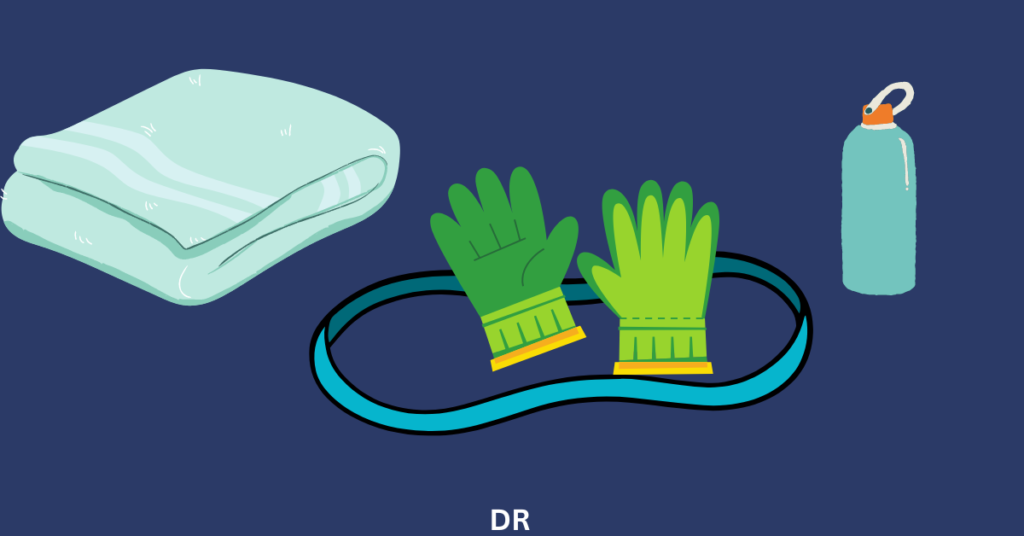
You know, when I first stepped into a gym to start weightlifting, I felt like a fish out of water. I had no clue what I needed, and boy, did I learn some lessons the hard way. Let me share what I’ve figured out about essential equipment for beginners – trust me, it’ll save you some headaches!
Comfortable, breathable workout clothes
First things first: comfortable, breathable workout clothes. This might seem like a no-brainer, but you’d be surprised. I made the mistake of wearing an old cotton t-shirt for my first workout. Big mistake! I was a sweaty mess in no time, and that shirt felt like it weighed a ton. Now I stick to moisture-wicking fabrics. They’re a game-changer, keeping you cool and dry even when you’re working up a sweat.
Supportive athletic shoes
Next up, supportive athletic shoes. I can’t stress this enough. I once tried lifting in my regular sneakers and nearly rolled my ankle. Not fun. A good pair of athletic shoes with proper support can make all the difference. They don’t have to be fancy or expensive, just sturdy and comfortable.
Weight lifting gloves (optional)
Now, weight lifting gloves. These are optional, but let me tell you about my experience. I started without them, thinking I was tough enough to handle it. After a few weeks, my hands were covered in calluses. Some people see that as a badge of honor, but for me, it was just uncomfortable. I gave gloves a try and found they helped me grip the weights better, especially when my hands got sweaty. But hey, it’s a personal choice.
Resistance bands for warm-ups
One thing I wish I’d known about earlier: resistance bands. These little miracles are great for warm-ups. I used to just jump right into lifting, and man, did I feel it the next day. Now I use resistance bands to get my muscles ready, and it’s made a huge difference in preventing soreness and injury.
Water bottle for hydration
A water bottle is an absolute must. I learned this the hard way when I got so into my workout that I forgot to hydrate. Halfway through, I felt dizzy and had to call it quits. Now I always bring a big water bottle and make sure to sip regularly. Stay hydrated, folks!
Gym towel
Last but not least, a gym towel. I’ll admit, I didn’t think this was necessary at first. But after a few sessions of dripping sweat all over the equipment (gross, I know), I realized it’s not just for me – it’s courteous to others too. Plus, it’s handy for wiping down machines after use.
One thing I’ve learned is that you don’t need to break the bank on equipment when you’re just starting out. Focus on the essentials and upgrade as you go along. I made the mistake of buying a bunch of fancy gear right off the bat, and half of it I never even used.
Oh, and here’s a pro tip: if you’re not sure about committing to weightlifting long-term, see if you can borrow some equipment from a friend to try it out first. That’s what I did with my first set of resistance bands, and it helped me figure out what I liked before investing in my own.
Remember, the most important thing is to just get started. Don’t let not having the “perfect” equipment hold you back. I started with just a pair of old shorts, a t-shirt, and some beat-up sneakers. As long as you’re comfortable and safe, that’s what matters.
And hey, if you’re feeling overwhelmed by all this, don’t sweat it (pun intended). Everyone starts somewhere, and the weightlifting community is generally pretty friendly and helpful. Don’t be afraid to ask for advice at the gym or online forums.
So there you have it – my take on essential equipment for beginners. Now get out there and start lifting! Your future self will thank you.
Mastering Proper Form and Technique
Alright, let’s talk about mastering proper form and technique. This is something I wish I’d paid more attention to when I first started weightlifting. Trust me, I learned the hard way that good form isn’t just about looking cool in the gym mirror.

Importance of correct posture and alignment
So, correct posture and alignment. Man, this is crucial. I remember thinking I was hot stuff, lifting heavy weights with my back arched like a scared cat. Spoiler alert: I ended up with a strained back that put me out of commission for weeks. Not fun. Now I know that keeping a neutral spine and engaging my core is key for pretty much every lift.
Basic weightlifting movements (squats, deadlifts, bench press)
Let’s dive into some basic weightlifting movements. Squats, deadlifts, and bench press – the holy trinity of weightlifting, if you ask me. These exercises are fantastic for building overall strength, but they can also wreck you if you do ’em wrong.
Squats
Take squats, for instance. I used to think it was all about getting low, no matter what. My knees would cave in, and I’d bounce at the bottom like I was on a pogo stick. Bad idea. I learned that keeping your knees in line with your toes and controlling the movement is way more important than depth.
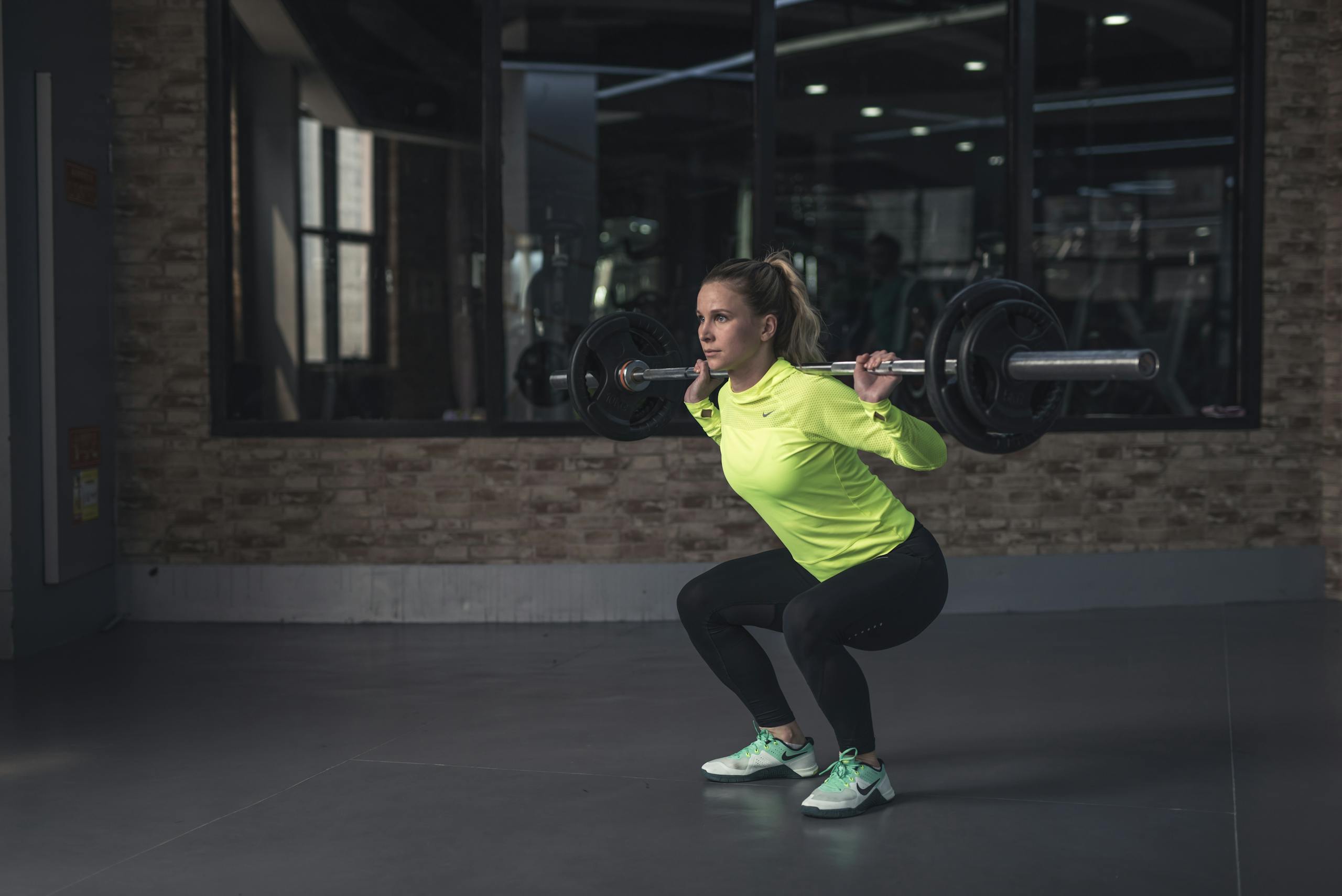
Deadlifts
Deadlifts were my nemesis for a long time. I’d round my back like I was trying to impersonate a turtle, and wonder why my lower back always hurt. Turns out, keeping your back straight and hinging at the hips is the way to go. It felt weird at first, but man, what a difference it made.
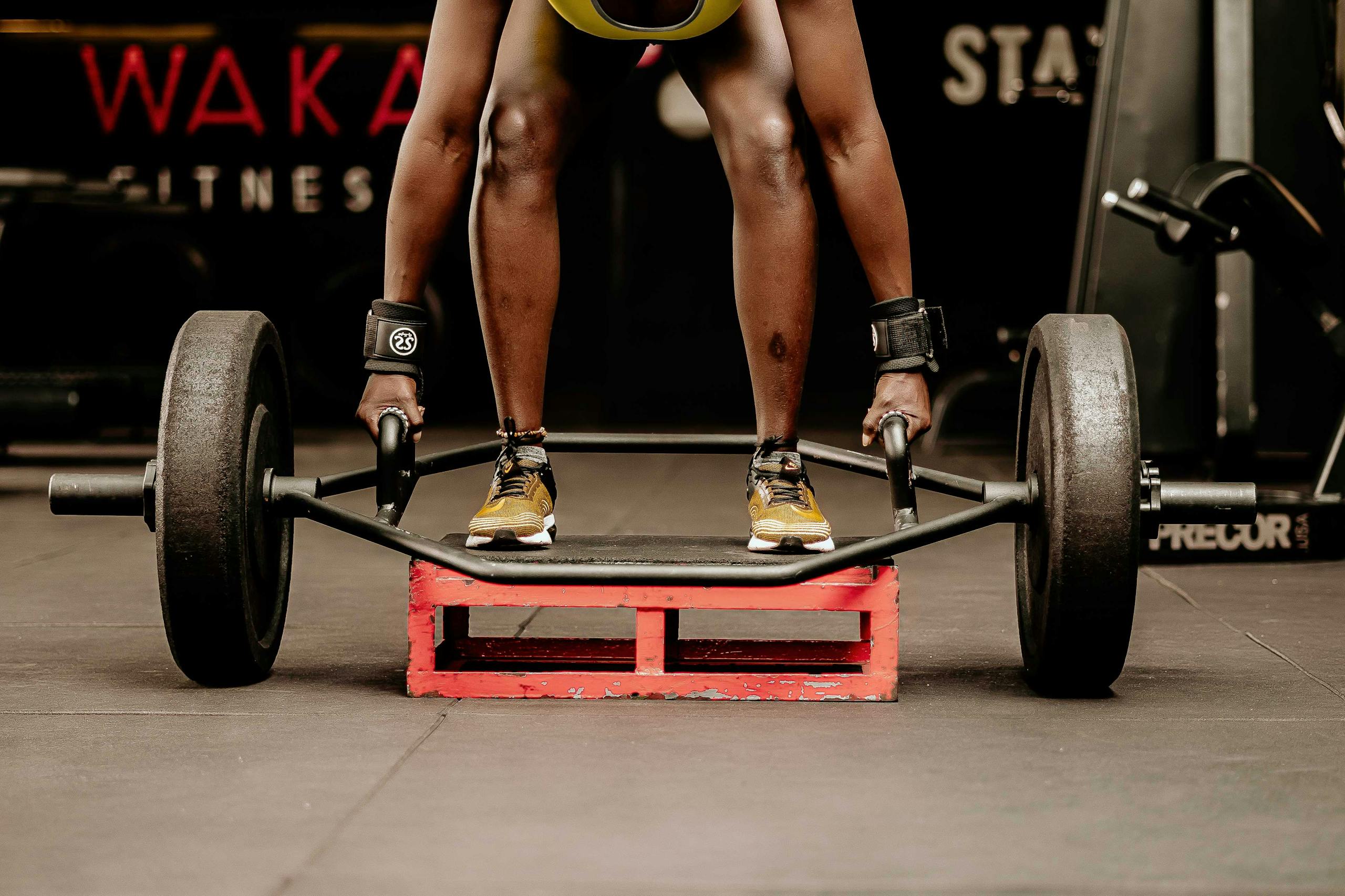
Bench press
As for bench press, I was guilty of the classic newbie mistake – bouncing the bar off my chest like it was a basketball. Not only is this cheating, but it’s also a great way to injure yourself. Slow and controlled is the name of the game here.
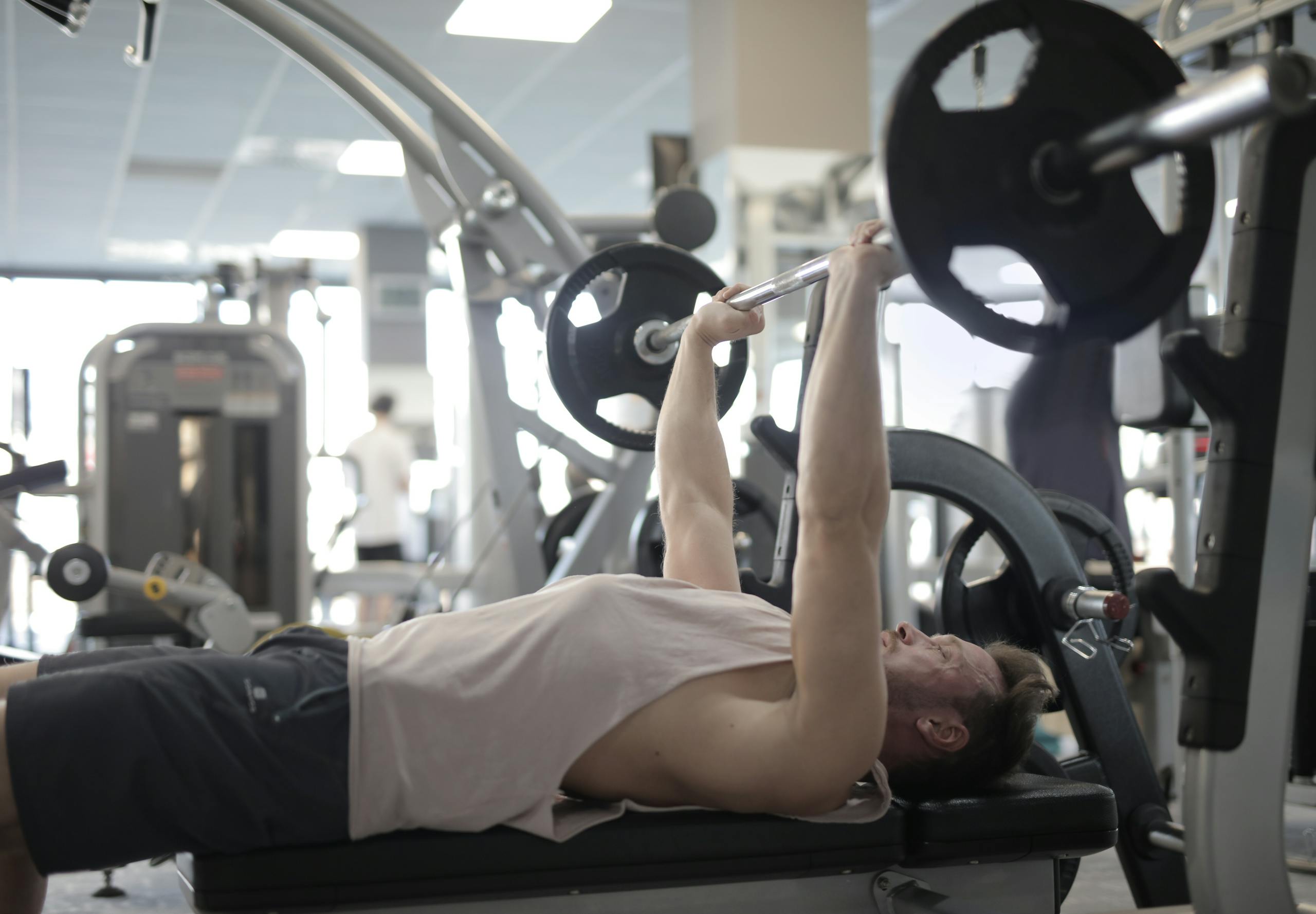
Common mistakes to avoid
Now, let’s talk about some common mistakes to avoid. One biggie is using momentum to swing weights around. I used to do this with bicep curls, looking like I was trying to throw the dumbbells over my shoulder. All I got for my efforts was sore elbows and minimal gains. Slow, controlled movements are where it’s at.
Another mistake I see a lot (and was guilty of myself) is holding your breath during lifts. I thought this made me stronger, but all it did was make me dizzy. Learning to breathe properly – exhaling during the hard part of the lift – was a game-changer.
Tips for maintaining proper form
So, how do you maintain proper form? First off, check your ego at the door. It’s better to lift lighter weights with good form than to go heavy with sloppy technique. I learned this the hard way when I tried to impress a cute gym-goer and nearly dropped a barbell on my foot.
Mirrors are your friend when it comes to form. I used to avoid looking at myself, thinking I looked silly. But watching yourself can help you spot and correct form issues. Just don’t get too distracted by your awesome muscles, okay?
Another tip: record yourself. I felt like a total dork doing this at first, but watching videos of my lifts helped me spot issues I couldn’t feel in the moment. Plus, it’s cool to see your progress over time.
When and how to use a spotter
Now, let’s talk about spotters. When I first started, I was too shy to ask for a spotter. Big mistake. A good spotter can not only keep you safe but also help you push your limits safely. Don’t be afraid to ask for a spot, especially on exercises like bench press where things can go south quickly if you fail a rep.
When choosing a spotter, look for someone who knows what they’re doing. I once had a well-meaning but clueless friend try to spot me on squats by grabbing my waist. Awkward and not helpful. A good spotter should know when to help and when to let you struggle a bit.
Remember, mastering proper form and technique is a journey, not a destination. I’m still learning and tweaking things years into my weightlifting journey. Be patient with yourself, stay consistent, and don’t be afraid to ask for help or advice. Your body will thank you in the long run.
And hey, if you’re ever unsure about your form, don’t hesitate to ask a trainer or experienced lifter for pointers. Most people are happy to help. After all, we were all beginners once. Now get out there and lift smart!
Creating Your Beginner’s Weightlifting Workout Plan
When I first decided to get serious about weightlifting, I was totally lost when it came to creating a workout plan. I mean, how hard could it be, right? Just lift some heavy stuff and get strong? Oh boy, was I in for a surprise.
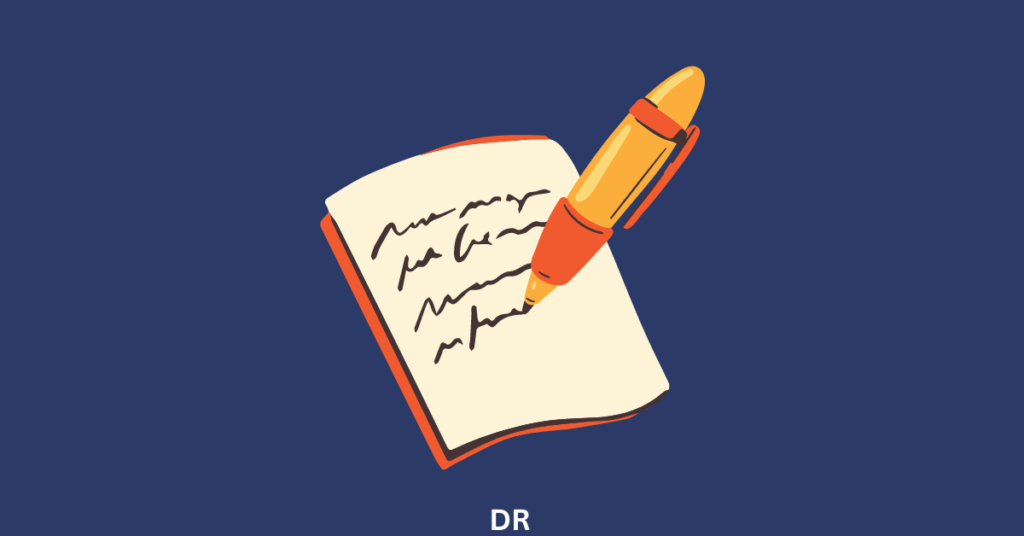
Frequency: How often to lift
Let’s start with frequency. I made the classic newbie mistake of thinking more is always better. I tried hitting the gym every single day, and let me tell you, by day four I felt like I’d been run over by a truck. Turns out, your muscles actually need time to recover and grow. Now I usually recommend lifting 3-4 times a week for beginners. It’s a sweet spot that lets you make progress without burning out.
Duration: Ideal workout length for beginners
As for duration, I used to spend hours in the gym, thinking I was being super productive. In reality, I was just wasting time and energy. These days, I tell beginners to aim for about 45-60 minutes per session. Trust me, if you’re lifting with proper intensity, that’s plenty. Quality over quantity, folks!
Rest periods: Balancing work and recovery
Rest periods were something I totally overlooked at first. I’d rush from one exercise to the next, barely catching my breath. Big mistake. I was always exhausted and couldn’t lift as much as I should’ve been able to. Now I know that rest is crucial. For beginners, I suggest resting about 60-90 seconds between sets. It gives you time to recover without cooling down too much.
Progressive overload: Gradually increasing weights
Progressive overload – now there’s a fancy term I wish I’d known about earlier. I used to just slap on more weight whenever I felt like it, with no real plan. Sometimes I’d increase too fast and hurt myself, other times I’d stay at the same weight for weeks and wonder why I wasn’t getting stronger. The key is to increase the weight gradually. Maybe add 5 pounds to your lifts every week or two. It might not seem like much, but it adds up fast!
Sample workout routines for different fitness levels
Alright, let’s talk sample routines. When I started, I was clueless and just copied whatever the biggest guy in the gym was doing. Not smart. Here’s a basic full-body routine that I wish I’d known about as a beginner:
Monday:
- Squats: 3 sets of 8-10 reps
- Bench Press: 3 sets of 8-10 reps
- Bent-over Rows: 3 sets of 8-10 reps
- Overhead Press: 2 sets of 10-12 reps
- Planks: 3 sets, hold for 30 seconds
Wednesday:
- Deadlifts: 3 sets of 6-8 reps
- Dumbbell Lunges: 3 sets of 10 reps each leg
- Push-ups: 3 sets of as many as you can do with good form
- Lat Pulldowns: 3 sets of 10-12 reps
- Bicep Curls: 2 sets of 10-12 reps
Friday:
- Leg Press: 3 sets of 10-12 reps
- Incline Dumbbell Press: 3 sets of 8-10 reps
- Cable Rows: 3 sets of 10-12 reps
- Tricep Dips: 3 sets of as many as you can do
- Crunches: 3 sets of 15-20 reps
Now, this is just a starting point. As you get stronger and more comfortable with the exercises, you can start tweaking things. Maybe add an extra day, or focus more on certain muscle groups.
One thing I’ve learned is that consistency is key. It’s better to stick to a simple plan consistently than to have some complex routine you can’t keep up with. I made that mistake, trying to follow some pro bodybuilder’s routine I found online. It was way too much for me, and I ended up getting discouraged and quitting for a while.
Oh, and don’t forget to warm up! I used to jump right into heavy lifts and wonder why my joints always hurt. Now I always start with 5-10 minutes of light cardio and some dynamic stretches. It makes a world of difference.
Remember, everyone’s fitness level is different. Don’t be afraid to modify exercises if you need to. When I started, I couldn’t do a single proper push-up. I started doing them on my knees and gradually worked my way up. No shame in that game!
And hey, it’s okay if you don’t get it perfect right away. Your workout plan will evolve as you learn more about your body and what works for you. The important thing is to get started and stay consistent.
So there you have it – a beginner’s guide to creating a weightlifting workout plan. Now get out there and start lifting! And remember, Rome wasn’t built in a day, and neither are six-pack abs. Patience and persistence, my friends!
Nutrition Tips to Support Your Weightlifting Journey
Alright, let’s dive into nutrition for weightlifting. When I first started lifting, I thought I could eat whatever I wanted as long as I was pumping iron. Boy, was I wrong! It took me a while to figure out that what you put in your body is just as important as what you do in the gym.
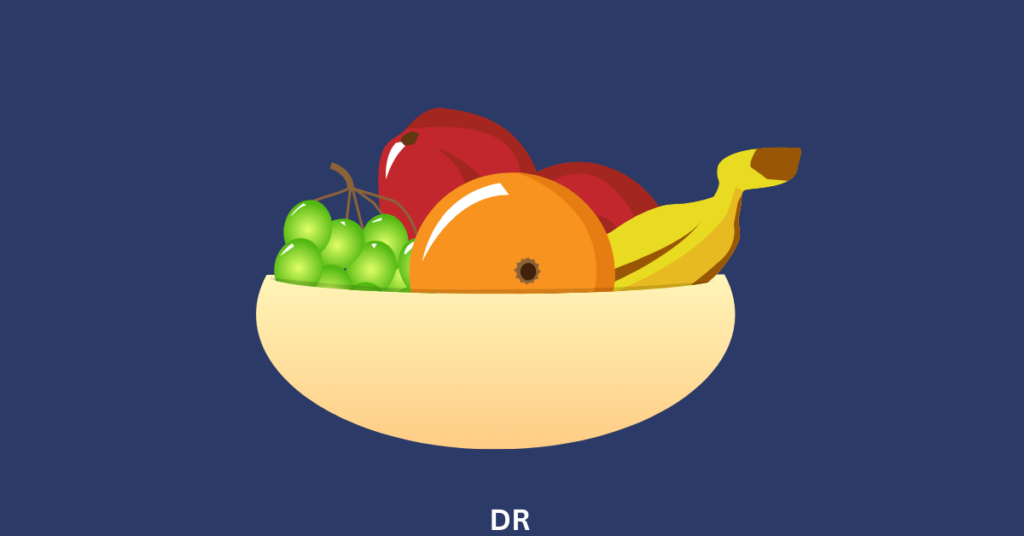
Protein requirements for muscle building
Let’s talk protein. I used to think more was always better, so I’d chug protein shakes like they were going out of style. Turns out, your body can only use so much at once. These days, I aim for about 1.6 to 2.2 grams of protein per kilogram of body weight. For me, that’s around 150 grams a day. I get it from a mix of chicken, fish, eggs, and yes, the occasional protein shake.
Importance of carbohydrates for energy
Now, carbs. Oh man, I used to be terrified of carbs. I thought they were the enemy of gains. But after trying to lift on a super low-carb diet, I felt like I was moving through molasses. Carbs are your body’s preferred energy source, especially for intense workouts. I now make sure to get plenty of complex carbs like whole grains, sweet potatoes, and oatmeal. They keep my energy levels steady throughout my workouts.
Healthy fats and their role in hormone production
Healthy fats were something I totally overlooked at first. I was all about that low-fat life, thinking it would help me stay lean. But then I started having issues with my energy levels and even my mood. Turns out, fats are crucial for hormone production, including testosterone which is key for muscle growth. Now I make sure to include sources like avocados, nuts, and olive oil in my diet.
Hydration strategies before, during, and after workouts
Hydration is so important, and it’s something I used to slack on. I’d show up to the gym already dehydrated and wonder why I felt so sluggish. These days, I start hydrating well before my workout. I aim to drink about 500ml of water in the two hours before lifting. During my workout, I sip water regularly. And afterwards, I make sure to rehydrate, especially if I’ve been sweating a lot.
Pre and post-workout meal ideas
Pre and post-workout meals were a game-changer for me. I used to work out on an empty stomach, thinking it would help me burn more fat. All it did was make me feel weak and shaky. Now, about an hour before my workout, I’ll have something like a banana with peanut butter, or some oatmeal with berries. It gives me the energy I need without making me feel too full.
Post-workout, I try to eat within 30 minutes of finishing. My go-to is usually a chicken breast with some brown rice and veggies. Or if I’m in a rush, I’ll have a protein shake with a piece of fruit. The key is getting a mix of protein for muscle recovery and carbs to replenish energy stores.
One mistake I made early on was thinking I needed to eat like a bodybuilder all the time. I’d force myself to eat these huge, bland meals of chicken and broccoli. It was miserable, and I couldn’t stick to it. Now I focus on eating a balanced diet with foods I actually enjoy. It’s much more sustainable in the long run.
Oh, and let’s talk about supplements. When I first started, I thought I needed every powder and pill on the market. My bathroom cabinet looked like a GNC store! These days, I keep it simple. A good quality protein powder, some creatine, and a multivitamin are really all most of us need. The rest comes from whole foods.
I’ve also learned the importance of listening to my body. Some days, I’m hungrier than others, and that’s okay. I used to stick to a strict meal plan no matter what, but now I’m more flexible. If I’m extra hungry after a tough workout, I’ll eat a bit more. If I’m not as hungry on a rest day, I might eat a little less.
Remember, nutrition isn’t one-size-fits-all. What works for me might not work exactly the same for you. It took me a lot of trial and error to figure out what foods made me feel best for my workouts. Don’t be afraid to experiment a bit to find what works for you.
And hey, don’t stress too much about being perfect all the time. I used to beat myself up if I ate a slice of pizza or had a beer with friends. Now I know that one “cheat” meal isn’t going to undo all your hard work. It’s about consistency over time, not perfection every single day.
So there you have it – my nutrition tips for supporting your weightlifting journey. Remember, food is fuel for your workouts and recovery. Treat your body right, and it’ll reward you with those sweet, sweet gains!
Safety First: Preventing Injuries and Proper Recovery
Let me tell you, when it comes to weightlifting, safety is no joke. I learned this the hard way, and boy, do I wish someone had drummed this into my thick skull when I first started.

Importance of warm-up and cool-down routines
Warm-ups and cool-downs? I used to think they were for wimps. I’d strut into the gym, grab the heaviest weights I could find, and start lifting cold. Big mistake. One day, I felt something pop in my shoulder, and bam – I was out of commission for weeks. Now, I always start with a good 10-minute warm-up. Light cardio, some dynamic stretches, maybe some bodyweight exercises. It gets the blood flowing and preps my muscles for the real work.
Cool-downs are just as important. I used to finish my last set and bolt out the door. But then I’d be stiffer than a board the next day. These days, I take a few minutes to do some static stretches and maybe some light walking. It helps bring my heart rate down and starts the recovery process.
Listening to your body and knowing your limits
Speaking of recovery, that’s something else I used to ignore. I thought I was being tough by hitting the gym every single day. But all I was doing was running myself into the ground. Your muscles need time to repair and grow. Now I make sure to have at least one or two rest days a week. And let me tell you, my gains have actually improved since I started giving myself time to recover.
Rest and recovery between workouts
Listening to your body is crucial. There’s a big difference between the good burn of a challenging workout and the sharp pain of an injury. It took me a while to learn this difference. I used to push through any kind of pain, thinking “no pain, no gain”. Well, that attitude landed me with a nasty back injury that took months to heal. Now, if something doesn’t feel right, I stop and reassess. Maybe I need to adjust my form, or maybe I need to call it a day. There’s no shame in that.
When to seek professional help or guidance
When it comes to seeking professional help, don’t be a meathead like I was. I thought I knew everything and could figure it all out on my own. But after a string of minor injuries and plateaus in my progress, I swallowed my pride and hired a trainer for a few sessions. It was eye-opening.
They corrected my form on exercises I thought I had mastered and gave me new ideas for my routine. Now, I’m not saying you need a trainer all the time, but getting some professional guidance, especially when you’re starting out, can be incredibly valuable.
Common weightlifting injuries and how to avoid them
Let’s talk about common injuries. I’ve seen (and experienced) my fair share. Rotator cuff injuries are a big one, often from poor form on shoulder exercises or bench press. To avoid these, I make sure to keep my shoulders down and back, and I don’t let my elbows flare out too much on bench press.
Lower back injuries are another common issue. I remember the time I tried to deadlift way more than I should have, with terrible form to boot. I could barely walk for days after that. Now I’m religious about maintaining a neutral spine and engaging my core during lifts.
Knee injuries can happen too, especially with exercises like squats. I learned the hard way that letting your knees cave in during squats is a recipe for disaster. Keeping your knees in line with your toes and not going deeper than you can handle with good form is key.
One thing I wish I’d known earlier is the importance of balanced training. I used to focus only on the “mirror muscles” – chest, biceps, abs. But neglecting my back and legs led to imbalances that caused all sorts of problems. Now I make sure to train all muscle groups evenly.
Oh, and don’t forget about proper footwear! I used to lift in my ratty old running shoes, wondering why I felt unstable during squats and deadlifts. Investing in a pair of flat, stable shoes made a world of difference in my lifts and helped prevent ankle rolls.
Hydration is another big factor in preventing injuries. I used to think I only needed to drink water when I felt thirsty. But by then, you’re already dehydrated. Now I sip water throughout my workout and make sure I’m well-hydrated before I even step foot in the gym.
Remember, progress in weightlifting is a marathon, not a sprint. It’s better to take it slow and steady than to rush and end up sidelined with an injury. Trust me, I’ve been there, and it’s not fun.
So there you have it – my hard-earned lessons on staying safe while lifting. Remember, the goal is to build your body up, not break it down. Stay safe, listen to your body, and you’ll be making gains for years to come!
Tracking Progress and Staying Motivated
Alright, let’s talk about tracking progress and staying motivated. This is something I wish I’d paid more attention to when I first started lifting. I used to just show up at the gym, throw some weights around, and hope for the best. Spoiler alert: that’s not the most effective approach.
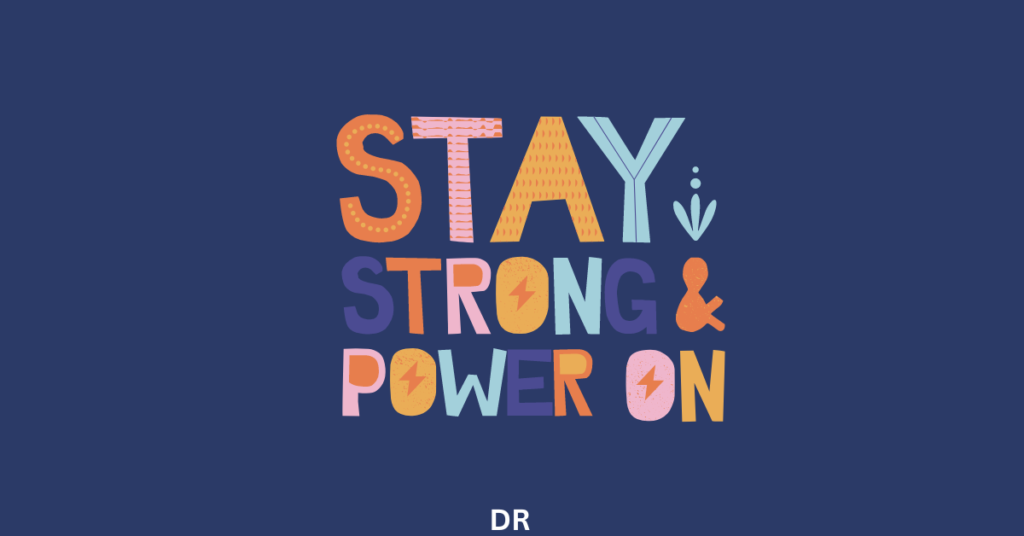
Setting realistic goals and expectations
Setting realistic goals is crucial. When I first started, I thought I’d be looking like Arnold Schwarzenegger in a month. Talk about setting yourself up for disappointment! Now I know better. I set small, achievable goals. Maybe it’s adding 5 pounds to my bench press this month, or doing one more rep on my squats. These little wins keep me motivated and add up to big changes over time.
Methods for tracking strength gains and body changes
Tracking progress is where I really dropped the ball at first. I’d rely on my memory to know if I was getting stronger. Bad idea. Now I keep a workout log. I write down the exercises I do, the weights I lift, and how many reps I manage. It’s amazing to look back and see how far I’ve come. Plus, it helps me plan my workouts and know when it’s time to up the weight.
As for body changes, I learned the hard way that the scale isn’t always your friend. I remember getting discouraged when the number on the scale went up, not realizing it was because I was gaining muscle. These days, I use a combination of methods. I take progress photos every month (same lighting, same poses), measure key areas with a tape measure, and pay attention to how my clothes fit. It’s a much more holistic approach.
Overcoming plateaus and setbacks
Plateaus? Oh man, they used to drive me crazy. I’d be making great progress, then suddenly… nothing. I’d get frustrated and want to quit. Now I know that plateaus are a normal part of the process. When I hit one, I mix things up. Maybe I’ll change my rep ranges, try some new exercises, or even take a deload week to let my body recover. It’s amazing how a little change can get things moving again.
Setbacks happen too. I remember getting sick and losing a bunch of strength. It felt like all my hard work had gone down the drain. But I’ve learned that fitness is a lifelong journey. A setback is just a setup for a comeback. I try to be patient with myself and focus on getting back on track, not beating myself up over lost time.
Building a supportive community or finding a workout buddy
Finding a supportive community has been a game-changer for me. At first, I was too shy to talk to anyone at the gym. But once I started opening up, I found a whole crew of like-minded people. We share tips, cheer each other on, and sometimes even work out together. It makes the whole experience so much more enjoyable.
Speaking of workout buddies, they can be awesome for motivation. I have a friend I lift with twice a week. On days when I’m feeling lazy, knowing he’s waiting for me at the gym gets my butt out the door. Plus, a little friendly competition never hurt anyone!
Apps and tools for logging workouts and progress
Now, let’s talk apps and tools. I used to think they were unnecessary, but man, was I wrong. I started using a workout tracking app, and it’s been awesome. It lets me log my workouts, see my progress over time, and even suggests when to increase weights. Some apps even have built-in workout plans and exercise demonstrations, which is super helpful when you’re just starting out.
One tool I’ve found surprisingly useful is a simple notebook and pen. Sometimes, when I’m feeling unmotivated, I’ll write down why I started this journey in the first place. It helps me reconnect with my goals and push through tough days.
Oh, and don’t underestimate the power of a good playlist! I have different ones for different types of workouts. My heavy lifting playlist is full of pump-up songs that get me fired up for big lifts.
Remember, motivation isn’t something you find once and keep forever. It’s something you have to cultivate every day. Some days you’ll feel on top of the world, others you’ll have to drag yourself to the gym. That’s normal. The key is consistency.
And hey, don’t forget to celebrate your victories, no matter how small. Hit a new personal record? Treat yourself to a nice meal. Finally nailed that form on deadlifts? Do a little victory dance (I know I do). Acknowledging your progress, no matter how small, can be a huge motivator.
So there you have it – my tips for tracking progress and staying motivated. Remember, this is your journey. Don’t compare yourself to others, focus on being better than you were yesterday. Now get out there and crush those goals!
Conclusion
Congratulations! You’re now armed with the knowledge to start your weightlifting journey with confidence. Remember, everyone starts somewhere, and the most important step is simply beginning. Don’t be afraid to start light, focus on form, and gradually increase your weights as you build strength and confidence.
With consistency and patience, you’ll be amazed at what your body can achieve. So, are you ready to grab those dumbbells and transform your life? The weights are waiting – let’s make 2024 your strongest year yet!

